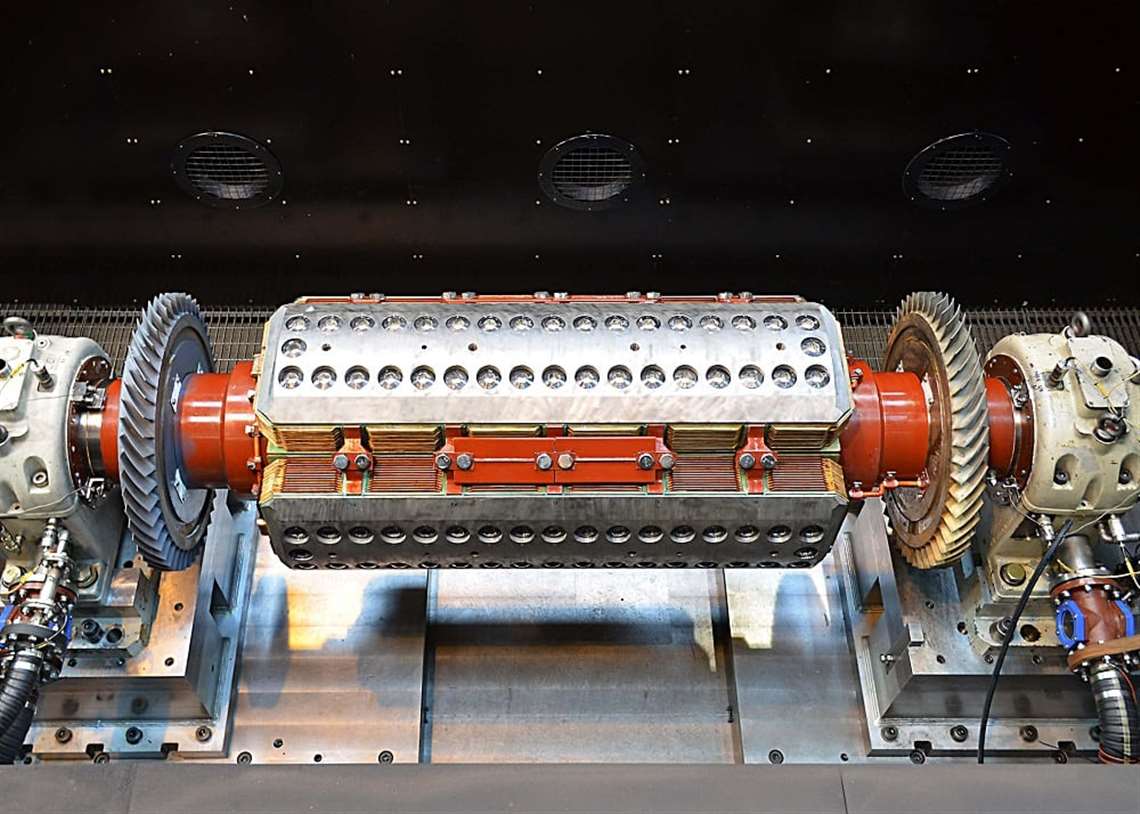Sulzer Strikes A New Balance
27 July 2018

Sulzer said it has invested in its high-speed balancing facility in Birmingham, U.K., which will allow it to reduce the time it takes to balance components used in large generators and motors.
When repairs and refurbishments are completed on large motors and power generation equipment, a high-speed balancing process is typically undertaken to ensure smooth operation. As one of the largest leading independent repair specialists in the world for rotating equipment, Sulzer uses this facility to complete the final stages of turnkey projects for its customers.

The recent investment has seen the existing equipment upgraded with advanced software from Schenck. The new Cabflex 3 software is complemented by additional hardware that makes the whole package user friendly and intuitive, Sulzer said, and will significantly reduce the time it takes to properly balance a rotor.
Flexible rotors that operate at high speed are subjected to considerable forces that can cause them to bend. Each rotor has different critical speeds where the amplitude of the bending moment is at its greatest. The purpose of the high-speed balancing process is to minimize the bending of the rotor as well as vibration so that it runs smoothly in normal operation.
To achieve this, the system takes the data from the balancing process and uses influence coefficients to calculate a correction response – telling the operator how much weight to add and where to place it. Flexible turbo-generator rotors are heavily influenced by the first critical speed initially and they often operate close to or above the second critical speed. Each time a rotor passes through these critical speeds the rotor bends and weights are used to counteract the bending moment.
In most cases, Sulzer said it aims to balance a rotor to under 25 µm peak to peak at running speed and 50 µm peak to peak through the first critical speed, but specific customer requests can also be accommodated, the company said. These measurements equate to balance grades, derived from ISO 1940-1, with the most common grade being G2.5, however, Sulzer said it can achieve grades less than G1.0 if required.
Sulzer said its process can be applied to any high-speed rotor, provided it fits into the dimensions of the Birmingham facility, which can handle rotors up to 12 m (39 ft.) long and weighing as much as 40 tonnes (44 tons) with a maximum operating speed of 5200 rpm.
Sulzer anticipates this new software will deliver a considerable time-saving in the process of balancing rotors. Previously, it would have taken four days to complete the high-speed and overspeed balancing of a typical generator rotor. In many cases this can now be reduced to just three days – a significant improvement when looking at the annual throughput of the high-speed balancing facility.
STAY CONNECTED




Receive the information you need when you need it through our world-leading magazines, newsletters and daily briefings.
POWER SOURCING GUIDE
The trusted reference and buyer’s guide for 83 years
The original “desktop search engine,” guiding nearly 10,000 users in more than 90 countries it is the primary reference for specifications and details on all the components that go into engine systems.
Visit Now
CONNECT WITH THE TEAM









